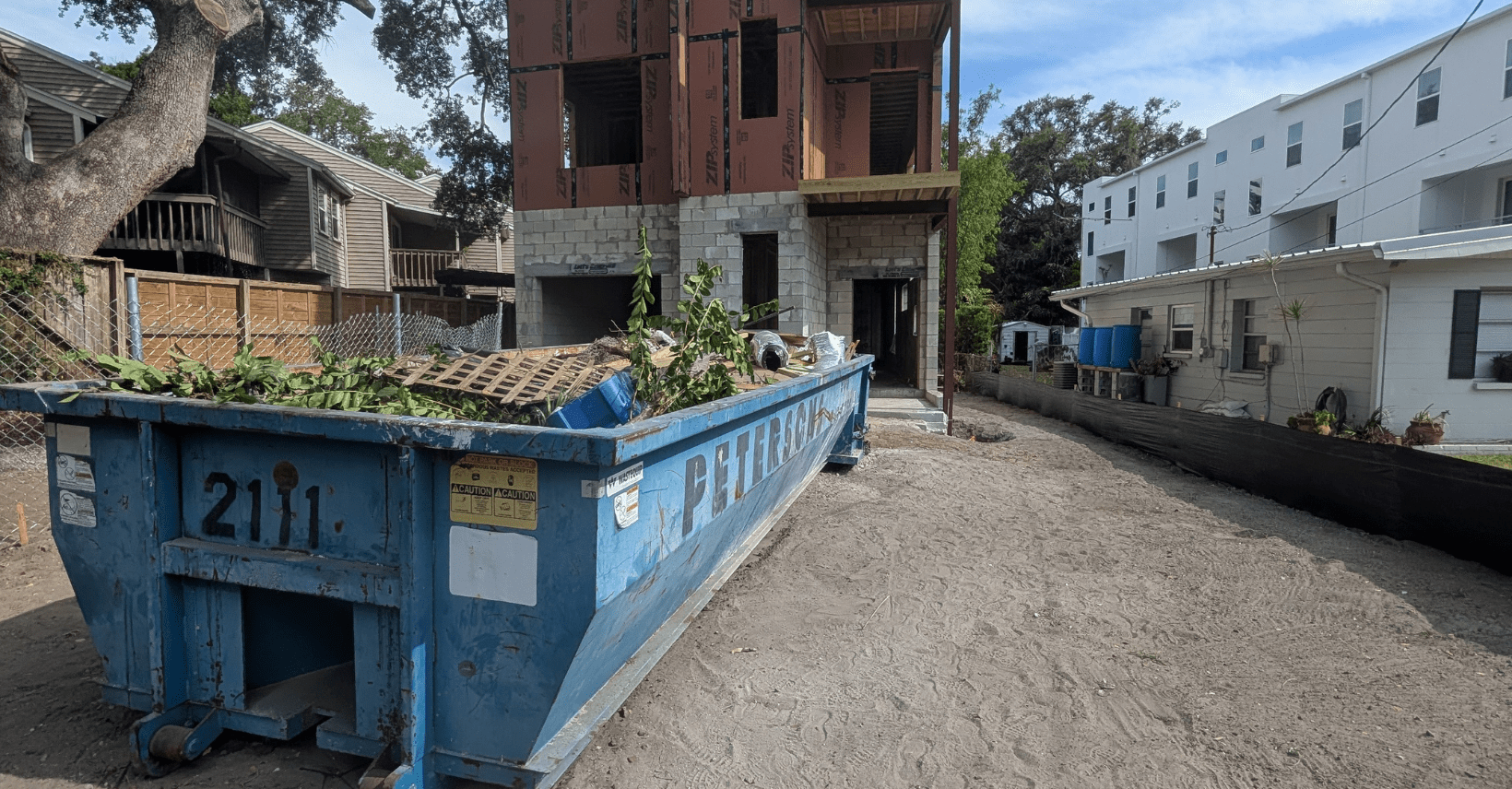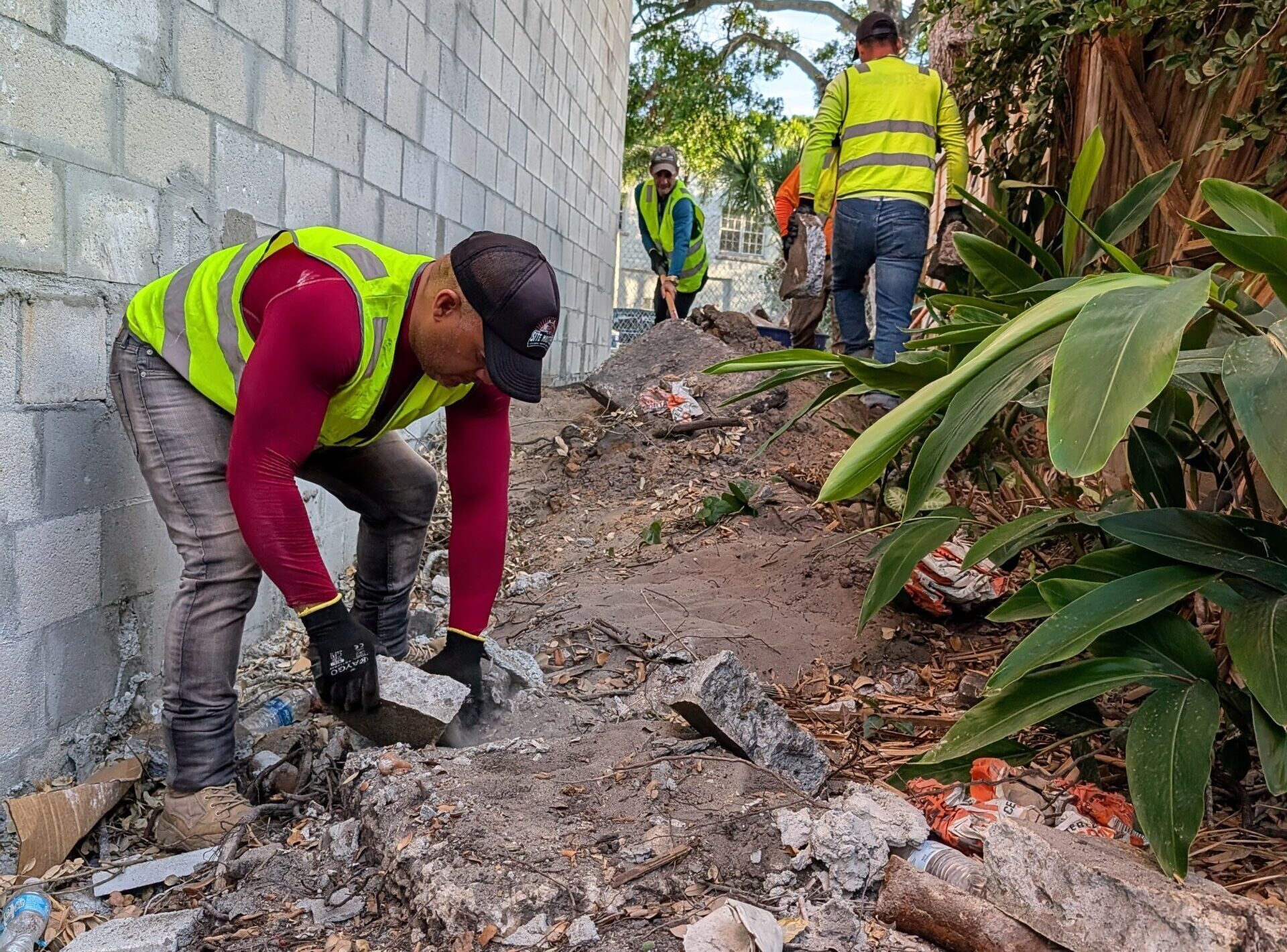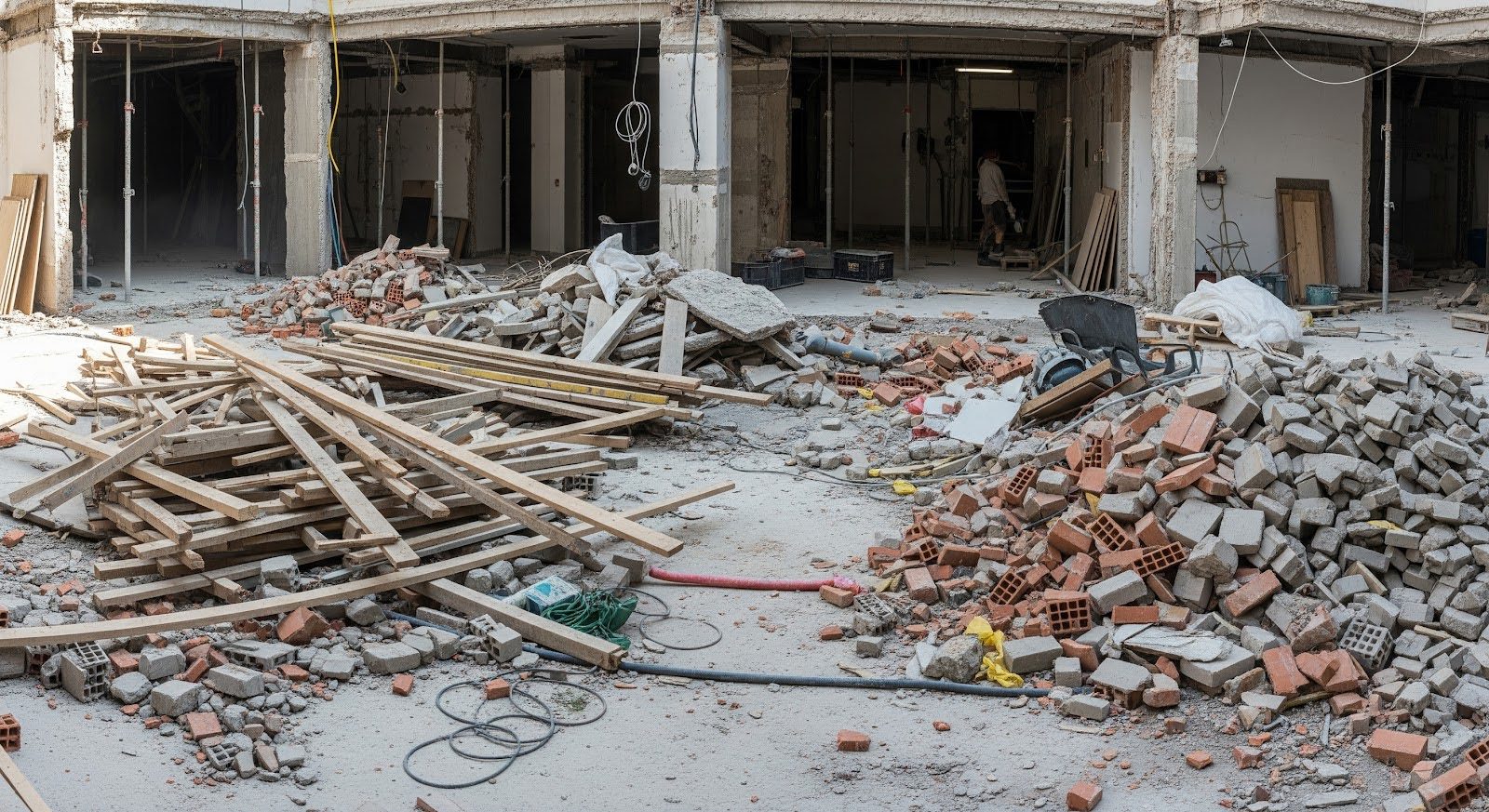Construction debris removal in Tampa keeps projects moving, whether your job site is near Busch Gardens, around the USF Tampa campus, in Seminole Heights, or in one of the new builds popping up across Tampa, FL.

Drywall offcuts, broken tile, cut lumber, roofing, and packaging stack up quickly, slowing crews down, blocking parking, and making it harder to present a professional site to owners and inspectors.
Our construction debris removal service covers renovation and construction cleanup for homeowners, property managers, investors, and contractors. We handle full construction debris cleanup, from small DIY projects to large-scale commercial jobs.
Book mid-project debris removal to keep pathways, work zones, and staging areas open. Clear sites help crews work efficiently, reduce wasted time looking for tools, and prevent material loss or damage caused by clutter.

After the work is done, our final cleanouts fast-track inspections, punch lists, and staging so you can wrap the project, collect payment, and move to the next job faster.
Our fully insured crews load the debris, haul it to the proper facilities, and leave indoor areas broom-clean and outdoor work zones hand-raked.
You get detailed before-and-after photo albums for every job, so you don’t have to step on-site to see the results, plus a broom-clean guarantee: if the area isn’t broom-clean, we come back free of charge.
We handle most construction and renovation debris. Typical jobs in Tampa, Temple Terrace, Carrollwood, and New Tampa include:
Often a distressed home has furniture or trash piled inside. For properties in Seminole Heights, Ybor City, and Downtown Tampa, we clear everything out before your team shows up. This keeps the project moving and reduces delays.

Heavy or bulky job-site waste is staged in driveways, garages, loading areas, or designated zones on the property.
If you're not sure how certain materials will be handled, just send us photos of the site. We’ll review everything and include the right disposal approach in your estimate.
Contractors, tradesmen, and investors rely on this service because it keeps their skilled crews focused on high-leverage work rather than on loading, sorting, and dump runs. Property managers and owners use it to keep communities and common areas liability-free.
With COIs and additional insured available for property managers, investors, and contractors who need documentation before work begins.
Before-and-after photo albums for every job, making it easy to document work orders, share with owners, and close out violations or punch lists.
If a work area isn’t broom clean or hand-raked when we leave, we come back and fix it at no charge.
Scheduling around your project, including early morning, evening, or weekend work when access during normal hours is limited.
Experience on active sites across mobile home parks, apartment complexes, shopping centers, single-family homes, and commercial construction projects.
Clean job sites are proven to boost productivity: crews move faster, fewer tools and materials go missing, and everyone spends less time stepping around debris.
A clear site lets your people focus on the work they’re actually hired to do, building, repairing, and finishing projects on schedule.

Contractors, tradesmen, and investors rely on this service because it keeps their skilled crews focused on high-leverage work rather than on loading, sorting, and dump runs. Property managers and owners use it to keep communities and common areas liability-free.
With COIs and additional insured available for property managers, investors, and contractors who need documentation before work begins.
Before-and-after photo albums for every job, making it easy to document work orders, share with owners, and close out violations or punch lists.
If a work area isn’t broom clean or hand-raked when we leave, we come back and fix it at no charge.
Around your project, including early morning, evening, or weekend work when access during normal hours is limited.
Experience across mobile home parks, apartment complexes, shopping centers, single-family homes, and commercial construction projects.
Clean job sites are proven to boost productivity: crews move faster, fewer tools and materials go missing, and everyone spends less time stepping around debris. A clear site lets your people focus on the work they’re actually hired to do, building, repairing, and finishing projects on schedule.
Construction debris removal pricing is straightforward and based on:

You’ll receive a clear, written price before any work begins.
Each visit is quoted individually so you always know exactly what the job will cost before we start.
If you’re also dealing with household junk, yard waste, or storm debris on the same property, we can include that in the same quote and visit. For more details on mixed-material cleanups, you can review our debris removal service page, which explains how we handle projects that go beyond renovation waste.
Job sites are full of moving parts, and debris shouldn’t add to the risk. Our crews arrive in proper PPE, use safe lifting and loading practices, and protect halls, elevators, and pathways as debris moves through the property.
We are fully insured for on-site work, including commercial auto, general liability, and workers' comp. Certificates of Insurance and additional insured documents can be provided for your records or vendor onboarding requirements.
Whenever practical, we separate concrete and metal for recycling. Concrete is delivered to facilities that crush it for road base or fill; metal is taken to scrap yards where it’s processed and reused.
Remaining materials go to appropriate C&D facilities. We handle the logistics so we stay aligned with local disposal rules, and you don’t have to research which site will accept which material.
Yes. We clear construction debris from single-family homes, mobile home parks, apartment complexes, shopping centers, and a wide range of commercial and mixed-use projects throughout Tampa, FL. We can also take care of renovation debris from at-home DIY projects.
Yes. We regularly handle concrete, masonry, metal, and other heavy materials. When necessary, we can break down large pieces safely. If a section is too heavy to move as-is, we’ll plan how to cut or stage it during the estimate.
Concrete is taken to recycling facilities to be crushed for road base. Metal is delivered to scrap yards for processing. Routing these materials properly reduces landfill waste and can help control disposal costs on your project.
For larger cleanups, we review photos and complete an on-site walkthrough. You receive a formal quote reflecting the scope, access, and materials. We provide before-and-after photos for simple record-keeping.
No sorting is required. Our crew will handle sorting when the project allows and when it makes sense for recycling purposes.
Absolutely. Kitchen and bath updates, flooring jobs, fence replacements, and DIY renovations all qualify. We’ll even clear out old projects you’ve been putting off or haul away rotted lumber.
We serve construction sites throughout all of Tampa Bay. From Tampa and the greater Tampa, FL area, including Temple Terrace, Seminole Heights, Carrollwood, New Tampa, Downtown Tampa, down to Sarasota. Share the address and a few photos, and we’ll confirm coverage.
If construction debris is slowing down your crew or blocking the next phase of work, we can help you clear it and move forward.
Once you approve your written estimate, we handle the rest: coordinating timing with your schedule, loading the debris, and hauling it to the proper facilities.
We deliver detailed, photo-verified, broom-clean results so you can focus on the work that actually moves your project ahead.
Tampa Bay’s trusted partner in
complete property cleanup
Call Now For a Free Service Quote
© 2025 All Rights Reserved. The Site Masters | Privacy Policy | Terms & Conditions